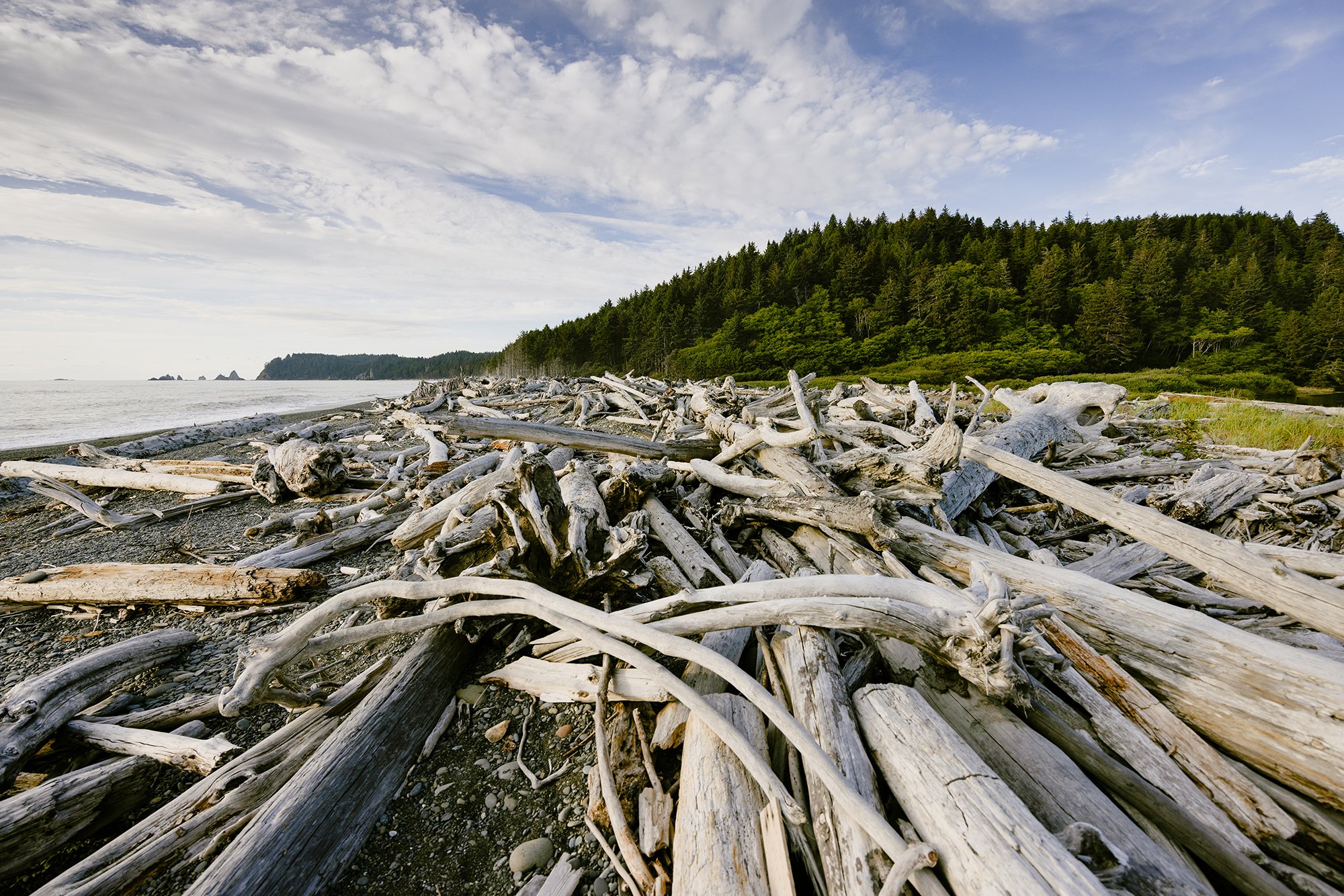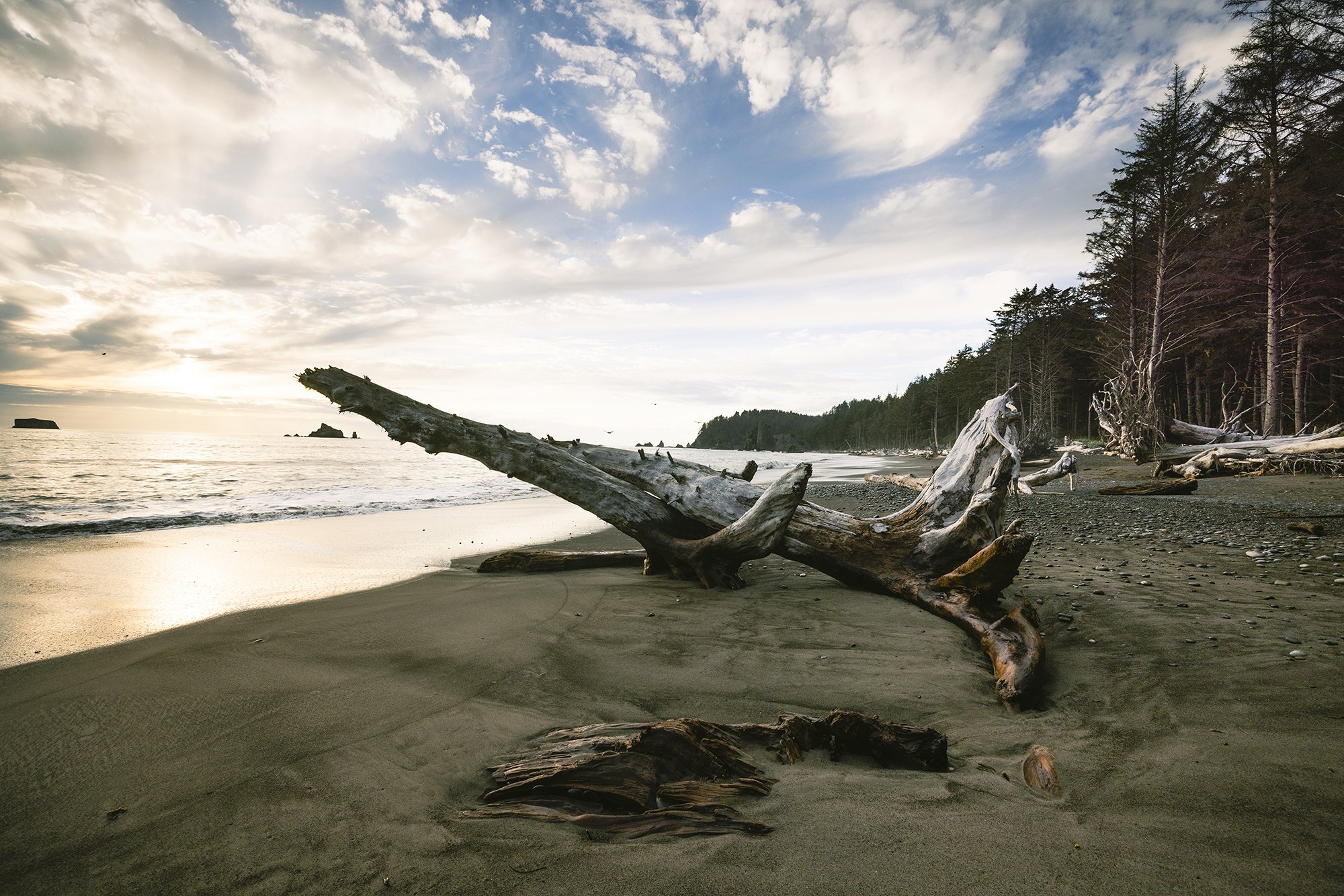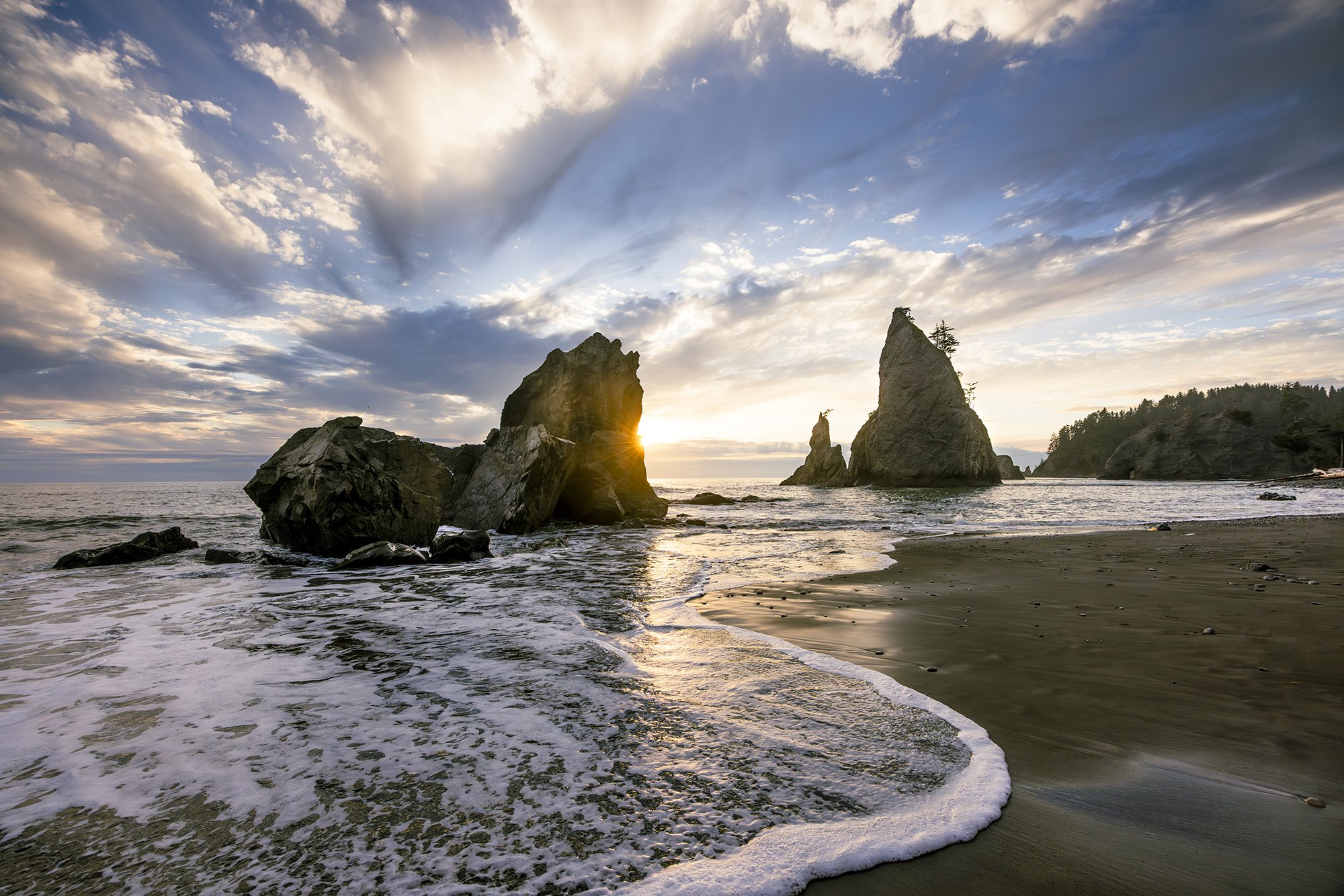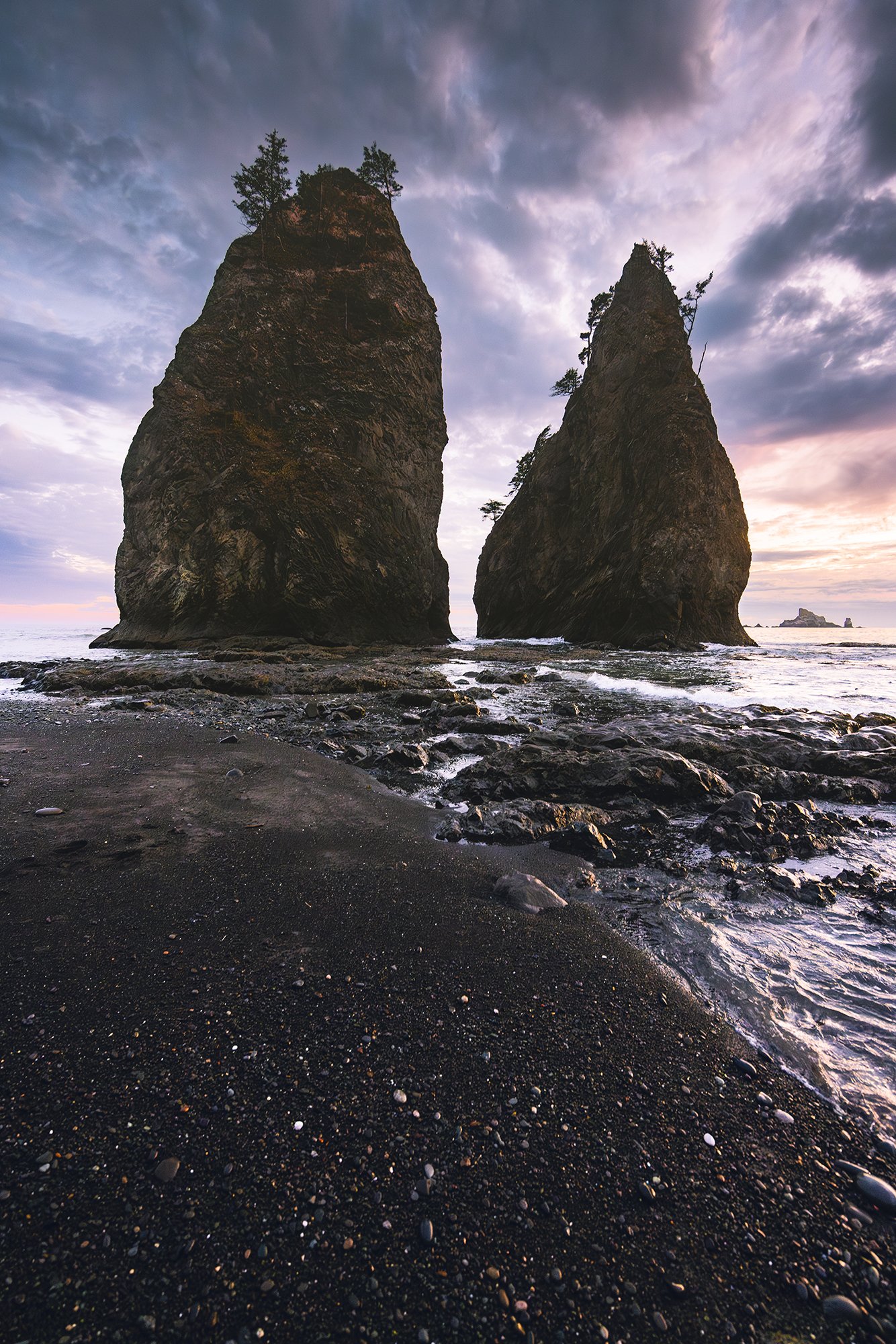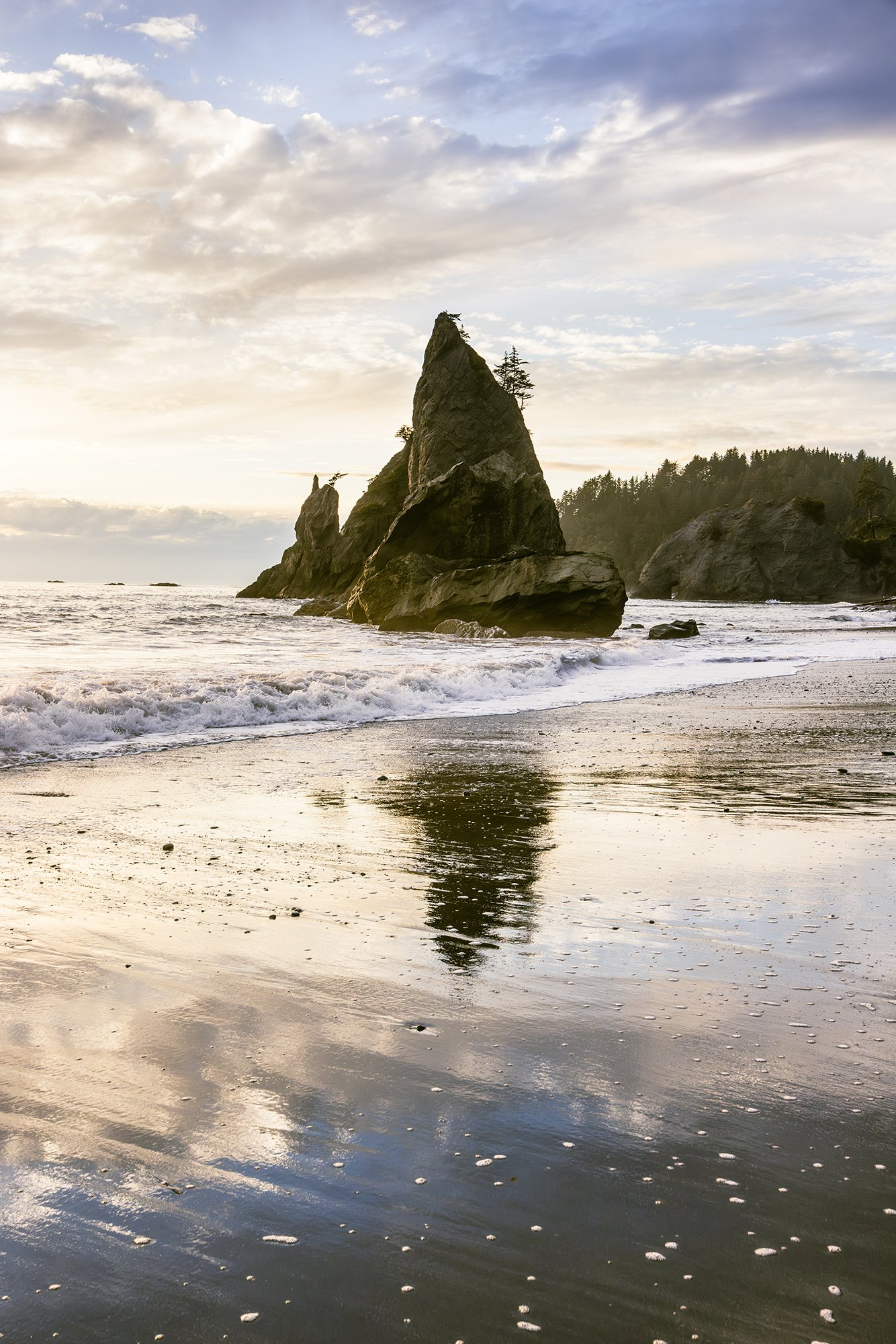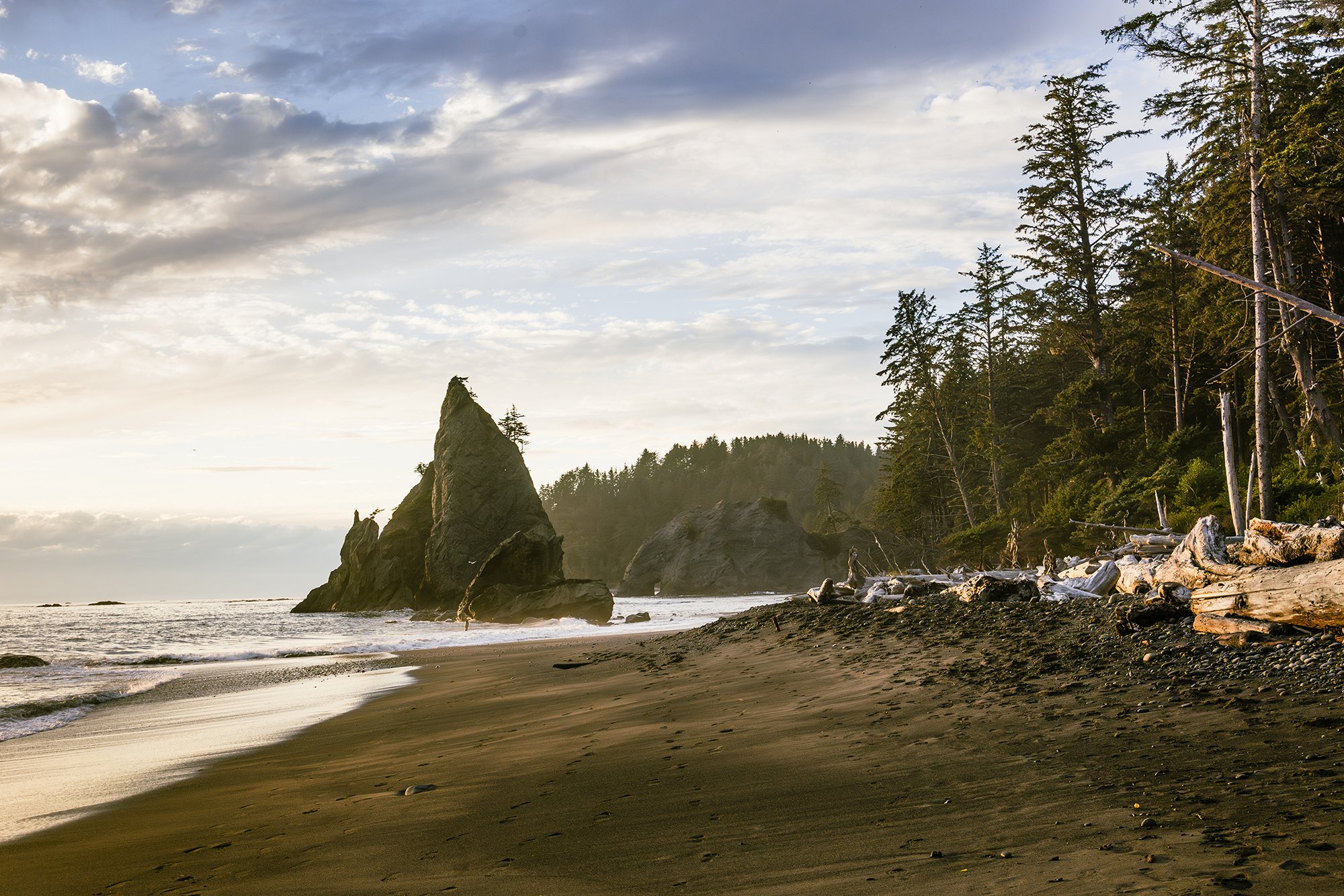PNW Musings: Rialto Beach and James Island
Starting at the mouth of the Quillayute River, Rialto Beach stretches north with drift logs, dark sand, and cobblestones scattered throughout. The southern part of Rialto Beach resides in the Quileute Reservation with the remaining portion located within Olympic National Park.
The beach is easily accessible, yet it is subject to powerful storm surges. These storms result in a large pile of uprooted trees along the shore, nicknamed “tree graveyard.” With the help of glacial melt and a day’s worth of rain, streams can rise six feet. As the water erodes the banks, trees are washed into the flood down to the river’s outlet and the beach. At high tide, these drift logs can suddenly roll. Visitors should be wary of drift logs for their safety, especially during high tide.
Located directly west of La Push, James Island can be seen from Rialto Beach. Originally called Ah-kah-lahkt (meaning way up there or on top of the hill; Alcorn and Alcorn, 1976), the current name is claimed to have originated from different sources. According to Origin of Washington Geographic Names, the island was named after Jimmie Howeshatta, Chief of the Quileute Tribe, while some local historians say it is named for Francis Wilcox James, a lighthouse keeper and friend of the Quileutes.
Several Quileute traditions and legends are connected to the history of the island. Among them is the use of James Island as an efficient fort against their enemies. According to an article published on the National Parks Service website, a conflict between the Quileuetes and Makahs that lasted over 100 years, began several centuries ago.
One precarious route led to the nearly 5-acre flat surface, where the island served as a natural fort for the Tribe. Additionally, food grown on the island and water from the springs provided for their needs.
In terms of defense, “Hot water and large boulders thrown over the side were important weapons used by the Quileute and the sheer walls, 180 feet high, mostly of Hoh sandstone, afforded excellent protection. Geology and rock formations, therefore played an important role in the [well-being] of the Quileute people.”
Tidepools are dotted up and down the beach, and are home to a variety of sea creatures, despite lengthy submersion in seawater, long exposure to the frying sun, and hammering stormwaves. Many of the creatures are low and rounded to withstand the pounding surf. Anemones will cluster together to reduce evaporation; crowd competing organisms; and amass more tentacles to catch, sting, and hold prey.
Toward the north, unique rock formations can be seen towering above the waves, including “split rock” and Hole-in-the-Wall. During the right conditions, the sunset can shine through Hole-in-the-Wall, and the clouds can illuminate with rich colors of purple, orange, red, and yellow.
Perhaps one of the most unique aspects of Rialto Beach is stated by sound-recording specialist Gordon Hempton. He has described it as “the most musical beach in the world,” due to the sound of the sea reverberating through the collection of driftwood logs on the shore. Hempton even produced a 30-minute soundscape recording from Rialto Beach. Like a live music performance, hearing it in person is an even better experience.
Visit Rialto Beach
To access the Rialto Beach trailhead, an Olympic National Park pass or America the Beautiful Pass is required. You will need a wilderness camping permit to camp in the backcountry. Remember to be respectful of nature and property. This site borders on Quileute Tribal lands.
Always check the tides! It is possible to get stranded when parts of the coast become impassable from high tide. For more information, visit the Olympic National Park website.
Hole-in-the-Wall (1.5 mi north of Rialto Beach)

